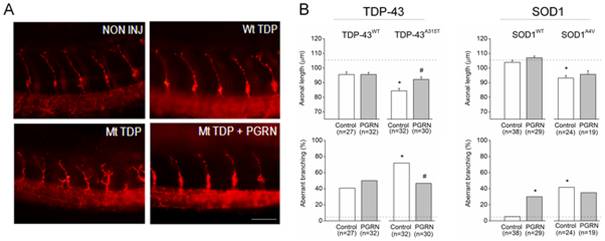Fig. 4 Co-expression of PGRN rescues the axonopathy induced by Mt TDP-43 but not Mt SOD1.
A) Staining of primary motor axons with an anti-synaptic vesicle 2 revealed a decrease in axonal length and increase in aberrant branching in embryos expressing Mt TDP-43 compared with Wt TDP-43. These signs of axonopathy were reduced by co-expression of human PGRN. B) Zebrafish embryos co-expressing Mt TDP-43 and control mRNA (GFP) exhibited decreased axonal outgrowth and increased aberrant branching compared to embryos expressing Wt TDP and GFP (p<0.001 and p = 0.016, respectively). However, co-injection with the equivalent dosage of PGRN mRNA (250 ng/μl) rescued both axopathies described (p<0.043). Mt SOD1 produced motor axon shortening (p<0.001) and increased branching (p<0.001) in comparison with Wt SOD1, as described previously [25]. PGRN co-expression had no significant effect on the Mt SOD1 induced axonopathy but did increase aberrant branching in Wt SOD1 injected embryos (p = 0.006). ^ indicates significantly different from buffer, * significantly different from ‘Wt + GFP’, and # significantly different from ′Mt + GFP′. Bars represent mean ± s.e.m and the number of replicates per group is displayed below each bar.

